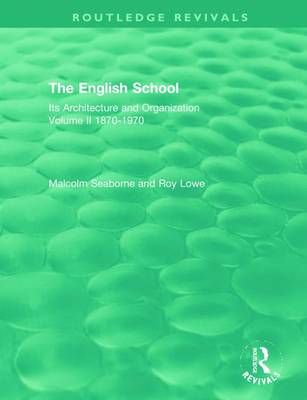
- Afhalen na 1 uur in een winkel met voorraad
- Gratis thuislevering in België vanaf € 30
- Ruim aanbod met 7 miljoen producten
- Afhalen na 1 uur in een winkel met voorraad
- Gratis thuislevering in België vanaf € 30
- Ruim aanbod met 7 miljoen producten
The English School
Its Architecture and Organization, Volume II 1870-1970
Malcolm Seaborne, Roy LoweOmschrijving
Britain has a rich heritage of school buildings dating from the later Middle Ages to the present day. While some of these schools have attracted the attention of architectural historians, they have not previously been considered from the educational viewpoint. Even schools of little or no architectural interest are important sociologically, since the changing architecture of schools reflects changing ideas about how children should be educated and organized for teaching purposes.
In this second volume, originally published in 1977, Malcolm Seaborne and Roy Lowe carry the historical record into our own time. Like its predecessor, the volume studies the development of school architecture and its influence on the organization of the school, and relates architectural questions to the educational and social forces which influence the design of schools. The authors have chosen representative examples which illustrate the main trends in the development of school design and construction.
Specificaties
Betrokkenen
- Auteur(s):
- Uitgeverij:
Inhoud
- Aantal bladzijden:
- 290
- Taal:
- Engels
- Reeks:
Eigenschappen
- Productcode (EAN):
- 9780367461935
- Verschijningsdatum:
- 28/02/2022
- Uitvoering:
- Paperback
- Formaat:
- Trade paperback (VS)
- Afmetingen:
- 189 mm x 246 mm
- Gewicht:
- 530 g

Alleen bij Standaard Boekhandel
Beoordelingen
We publiceren alleen reviews die voldoen aan de voorwaarden voor reviews. Bekijk onze voorwaarden voor reviews.











